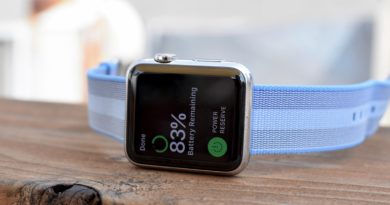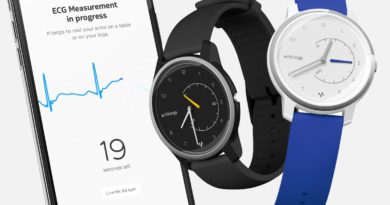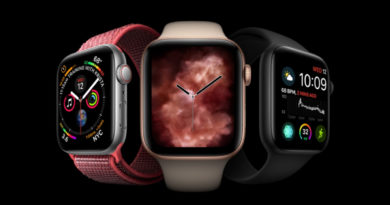Garmin vs Fitbit: We compare wearables, apps and features
![]()
Choosing between Garmin or Fitbit is a big decision for many trying to choose a fitness wearable – and while they may seem similar, in fact there’s huge differences between the two.
It’s all about how you like your data presented, and the level of depth you need.
For people who live and breathe sports Garmin is a natural choice, while those starting out with steps/sleep tracking are better suited to a Fitbit.
But that’s not the whole story.
Garmin has a much wider range of features and devices – which come in different form factors and price points.
What’s more, if you’re starting a fitness journey then you might want to choose a device that grows with you.
We know there’s a whole lot to cover, so we’ve broken down some of the key areas from hardware, features, apps and of course fitness tracking to see how the two compare. And we’ve tried to offer a glimpse inside what owning a device from each company is really like.Garmin or Fitbit: The hardwareBefore comparing Garmin and Fitbit devices, it’s important to remember that the line-ups of the two companies couldn’t be more different.
Fitbit has four main wearables – all with clear remits. And only one of those (the Fitbit Ionic) has GPS built in.
Garmin has nearer 30 different sports watches, and the differences can be quite obscure. As you move up in price, you essentially get more sensors, thus more complex data.
Here we’ve paired together obvious devices that you’d want to choose between – but remember Garmin has a huge array, so it’s well worth checking out our full Garmin devices buying guide.
Fitbit Versa 2 vs Garmin Venu
The Fitbit Versa 2 is the company’s latest smartwatch, with a slim design, square display and thin, lightweight build.
There’s no GPS on board but it will piggy back off your phone if needed. Aside from doing smartwatch things, like payments and notifications, it’s Fitbit’s most advanced device (along with the Charge 3). It’s also water resistant and pool friendly.
On board is the SpO2 sensor that can track blood oxygen, and it offers Sleep Stages, Sleep Score and top heart health insights.
As for Garmin, things are a little more complicated, such is the depth on offer. The Garmin Venu is the company’s only AMOLED display smartwatch that really matches up to the Versa 2. However, there’s more tech on-board. GPS is the main addition and Venu actually supports most of the features of the company’s basic Forerunners.
And in terms of tracked sports there are 14 dedicated modes, for running, cycling, swimming and gym workouts.
Alternatively, the Vivoactive 4 offers the same feature line-up but the low-power display offers longer battery life.Fitbit Charge 3 vs Vivosmart 4Fitbit’s most advanced fitness band, it has all the top smarts from advanced sleep tracking, SpO2 and heart rate.
It also features dedicated tracking of activities and workouts, although there’s no built-in GPS. The generously sized screen will alert you to calls and notifications.
The Vivosmart 4 is also big on advanced features too.
There’s SpO2 for blood ox tracking and stress tracking is part of the make-up as well, as well as Body Battery which indicates when your energy is low and you could do with resting up. Most of that is done from the Elevate heart rate sensor.
There’s no GPS on-board either, but both will use your phone’s if you take it out for a run as well.
Both have smart features such as call and notification alerts – and it’s Fitbit that excels here.
Fitbit Inspire HR vs Vivofit 4Fitbit’s slim-line fitness tracker doesn’t have its top-grade tech inside, but will still be fine for most users. It will track steps, sleep and heart rate using the built-in PurePulse sensor.
There’s also a basic, discreet screen for getting feedback on goal progress. There’s a non-HR version too, for those that just want the basics – and the tracker will release from its strap to clip on if needed.
If you prefer something a little more basic, Garmin also offers more options like the Vivofit 4 that focus solely on those standard fitness tracking features – steps, calories, distance and standing hours. You get a year of battery life there too.
However, the Vivofit 4 is getting old – so the Vivomove 3 might be a better option in an analogue watch format. However, it’s double the price of a Fitbit Ionic.
Fitbit Ionic vs Forerunner seriesThe Fitbit Ionic is for people who really care about fitness, with strong features that can go toe-to-toe with Apple Watch.
The main attraction is built in GPS and it’s waterproof to 50 metres, with built in workout tracking modes.
However, when it comes to sports tracking via GPS, Garmin excels. But when it comes to competing with the Ionic, the. entry level Forerunner 45 is more than a match. It offers basic running features (pace, time, distance, heart rare azones – and detailed breakdown of heart rate/VO2 Max in the app after.
If you want more advanced data then Garmin is a no-brainer. Devices like the Forerunner 245 Music or 645 Music increase the amount of data and battery life – as does the cost.Garmin or Fitbit: The appsWhile the hardware options will undoubtedly play a factor in your decision to lean towards one or the other here, it’s the companion apps and wider ecosystem that’s actually even more important.Those are the bits that keep you coming back to the device rather than just throwing it in the drawer.Apps compared: Fitbit app ultimate guide | Garmin Connect ultimate guideFitbit appTake Fitbit, which, while maybe not providing the most detailed after-workout metrics in the business, still manages to offer one of the more rounded and easy to use fitness platforms. This is particularly the case for beginners, who are able to dive into trends, dedicated workouts, sleep tracking and social aspects, such as linking with friends and challenges. Fitbit also has Sleep Score, which offers a simple look at your overall sleep quality, telling you how many breathing interruptions you might have experienced. In fact, we’d say that Fitbit has the best sleep tracking on the market. More on that shortly.Fitbit sleep trackingThere are many third-party apps that will shake hands with Fitbit, allowing you to pass data for workouts, calories and other information between them. Strava is a good example of this, letting you feed your runs into your daily Fitbit stats, while any Fitbit activities will also show up in the Strava app.With the Ionic, Fitbit also launched an app store. It was rough going at first, with only a couple of apps, but the store has gradually grown over the past couple of months, with the likes of The New York Times, Philips Hue, Yelp and more joining the fray.Garmin appAs for Garmin, you’ll be dealing with Connect, the home of your activity, and ConnectIQ, the store for you to pick up apps and new watch faces. As with Fitbit, we have a comprehensive look on how to run better with Garmin Connect and a Garmin Connect IQ app store guide, but we’ll skim through the highlights here. The companion app, which is compatible with all Garmin devices and also available on desktop, offers you a place to plan, track and review your workouts. So whether you’re preparing for a marathon and setting monthly goals or simply looking to beat other runners’ best times in local areas, the platform has you covered.Garmin sleep trackingWhen compared to its Fitbit counterpart, more serious exercisers will find little comparison – Garmin gives you an incredibly detailed look at your activity once you head into the Performance Stats section of the app.Currently, ConnectIQ is also stronger than what Fitbit offers if you’re looking to boost and personalise your device, though the Versa is an admirable step toward levelling that playing field. Not only does Garmin’s watch-heavy focus lend itself towards widgets, faces and data fields, but the amount of apps available in the store is also impressive. Garmin v Fitbit: Fitness trackingWith this area encompassing so many different devices, it’s hard to crown one company the winner when it comes to basic tracking.
Fitness trackingFor example, with heart rate tracking both Garmin and Fitbit have their secret algorithms working in the background, often making small adjustments after the fact. In truth, it’s hard to establish different trends in how the likes of steps and calories are calculated, but the two do bring different propositions to the table in terms of wellness.Winner: FitbitHeart healthIn terms of general wellness, we think Fitbit has the edge here thanks to the simplicity of the data and the way resting heart rate is presented – although you won’t be missing out on any data if you choose Garmin.
However, Garmin has the upper hand in terms of heart rate via exercise. There’s more emphasis placed on heart rate zones and VO2 Max – and more advanced data spins of this in terms of training effect, load, stress and recovery.
Winner: Draw (go Fitbit for liferstyle, Garmin for sport)
SleepFitbit certainly has the edge here. Fitbit does possess the power to use your heart rate to work out when you’re in REM sleep and provide full sleep stages.
Garmin used to lag badly in terms of sleep, but more recently added the ability to see your light, deep and REM sleep.
It’s not as advanced as what Fitbit is offering, largely because it’s missing insights.
Winner: FitbitStress and recoveryWhat’s also interesting to note is the two companies’ approach to stress tracking. Fitbit uses Relax, which takes advantage of the onboard heart rate monitor, plus HRV monitoring to detect changes in heart rate and offer personalised breathing options.
There’s also info to help you keep track of your resting heart rate, a strong indicator of overall health. However, much of this is only available in the Blaze, Charge 3, Versa and Ionic. It’s a similar deal with Garmin’s stress tracking, with this also available through more of its wearables including the Vivosmart 4, Vivoactive 3 and the Fenix 5 and 5 Plus range.
Winner: GarminFemale health trackingWhat Fitbit has over Garmin is female health tracking, which allows women to log cramps and headaches. Fitbit will use that data to analyse where you are in your menstrual cycle and will be able to predict when the next one will come around.
As we’ll explore below, Garmin’s ecosystem does allow for you to dig deeper into your own activity, if you so choose. And when it comes to fitness tracking basics, the Vivosmart family may not go toe-to-toe with Fitbit’s range in every matchup, but Garmin bolsters a number of heavy-hitting smartwatch options packed with sensors and features that only Fitbit’s Ionic can hope to compare itself to.Winner: FitbitGarmin v Fitbit: Sports trackingAs you may have already gathered, those with ambitions to track a wider range of activities and receive deeper insights should knock on Garmin’s door.
But just how big is the gap between the two groups when it comes to tracking various sports?
GPS tracked workoutsWell, while the likes of Fitbit’s Ionic and Charge 3 will give you dedicated modes for running, cycling and activities on the treadmill, that’s generally as far as it goes.
And given the fact that the only devices with built-in GPS are the Ionic and the dear departed Surge, accuracy isn’t exactly optimal.
You’re relying on your phone’s GPS to track. That’s not a problem for most people but consider that some people don’t want to take a smartphone for a run, and some phone placements (e.g. in a bag or waist strap) can throw GPS position, and make for accuracy issues.
Not only can you track the likes of running, trail running, hiking, cycling, swimming, skiing, rowing, triathlon training and more, but you can also do this with the built-in GPS or Garmin’s UltraTrac, which conserves battery to keep tabs on your activity over longer distances.
Winner: GarminSwimmingFitbit also now has four devices – the Flex 2, Charge 3, Ionic and Versa – that can tolerate swimming.
Garmin’s entire range is water resistant and even basic running watches have a pool swimming mode.
If you’re into pool sessions, Garmin tends to be more reliable accuracy-wise for longer sessions, more metrics, swimming-focused features.
No Fitbits offer open water swim tracking either. If you wanted that.
Winner: GarminHeart rate in workoutsHeart rate is a staple of both sets of devices, but when it comes to sports there’s no arguing with Garmin.
Both Fitbit and Garmin track your heart rate through sessions, offer information on the heart rate zone you’re in and improvements over resting heart rate – which is an indicator of improving fitness. Score draw here.
Fitbit and Garmin devices will also track VO2 max, which is called Cardio Fitness Score in Fitbit devices – although our testing as found it to report a little high. Advantage Garmin.
However, if you buy into the Garmin mid-range Forerunners you will get even more data.That VO2 Max score will feed into things like Training Effect and race predictors, which is a step above for those training for half and full marathons.
Finally, pretty much all Garmin watches let you hook up a chest strap, which is not an option on Fitbit trackers. That lends to more accurate data, especially during HIIT sessions. What’s more, top end Garmin’s can adapt your heart rate zones by using your Lactate Threshold scores determined from fitness tests with a chest strap – that’s a level of detail way beyond most users’ needs, but also beyond Fitbit’s skill set.
Winner: Garmin Garmin v Fitbit: VerdictWhy choose Fitbit?What you can be sure of, no matter which ecosystem you decide to delve into, is that you’re getting a good package.
Above, we’ve tried to outline the broad strokes of what both do well, but it’s clear that anybody on the hunt for an introductory device should first consider the range Fitbit has on offer. With Fitbit, you’re receiving a more 24/7, lifestyle option that can weave between the different aspects of your daily life.Chances are, if you’re looking to dip into this area, you’re more focused on health and wellness than personal bests and how long you spent in each heart rate zone.
That’s not to completely write off the Fitbit range as devices only suited to beginners, as there are some more advanced metrics and features available – VO2 Max and Guided Breathing, to name just two. You’ll also be on board for the company’s continued push into sleep tracking, and if you go with the Ionic or Versa you’ll likely get the fruits of sleep apnea and atrial fibrillation detection in the future (though, again, Garmin is making a push in that direction too). Why choose Garmin?With Garmin, in contrast, you’re generally being offered watches that are dedicated to exercise. Sure, you have the Vivo range which incorporates some wellness aspects and attempts to be more beginner friendly, but by and large the company is aiming to provide you with the ultimate wrist companion for when you’re actually exercising. These aren’t the best looking watches out there, and they’re also not trying (or not trying very hard) to be; this is all about arming you with features, be it pre-run, during your run or post-run to give you a better insight.But there’s so much choice, and if you really like to get sweaty then we guarantee you’ll dig the post workout analysis here much more than on a Fitbit. Garmin has more charts, more numbers – but the app is far less user friendly. What you do get is more analysis and credit for clocking up workouts.


